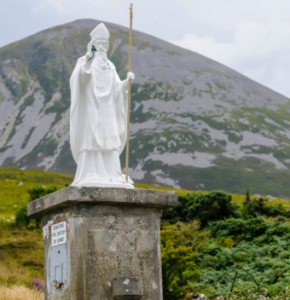 Every year on March 17th, people around the world put on their green attire, indulge in Irish cuisine, and celebrate St. Patrick’s Day with parades, music, and merriment. But do you know the story of St. Patrick? Let’s delve into the history, traditions, and modern-day festivities surrounding this beloved holiday.
Every year on March 17th, people around the world put on their green attire, indulge in Irish cuisine, and celebrate St. Patrick’s Day with parades, music, and merriment. But do you know the story of St. Patrick? Let’s delve into the history, traditions, and modern-day festivities surrounding this beloved holiday.
St. Patrick, is credited with bringing Christianity to Ireland in the 5th century. Despite his prominent status in Irish culture, St. Patrick was actually born in Roman Britain and then was kidnapped by Irish raiders at the age of sixteen1. After spending six years in captivity, he escaped and returned to his family. Following a religious awakening, St. Patrick returned to Ireland as a missionary, where he played a significant role in spreading Christianity and establishing churches.
The date of March 17th marks the traditional date of St. Patrick’s death, which is believed to have occurred around 461 AD. Over the centuries, St. Patrick’s Day evolved from a religious feast day into a secular celebration of Irish culture, identity, and heritage.
St. Patrick’s Day is characterized by a myriad of traditions and symbols that have become synonymous with the holiday. The color green, representing Ireland’s lush landscapes, is prominently featured in clothing, decorations, and even food and drink. Shamrocks, which legend says St. Patrick used to explain the concept of the Holy Trinity, are also a ubiquitous symbol of the holiday.2
While St. Patrick’s Day has its roots in religious observance, it has evolved into a material holiday celebrated by people of all backgrounds and nationalities. Cities around the world, from Dublin to New York City to Sydney, host vibrant St. Patrick’s Day celebrations that draw locals and tourists alike.
In Ireland, St. Patrick’s Day is a public holiday marked by festivities that span several days, including parades, concerts, and cultural events. Dublin’s St. Patrick’s Festival is one of the largest and most renowned celebrations, featuring street performances, art installations, and fireworks displays.
In the United States, St. Patrick’s Day is celebrated with gusto, particularly in cities with large Irish-American populations. The annual St. Patrick’s Day Parade in New York City is one of the oldest and largest parades in the world, attracting millions of spectators and participants each year.
St. Patrick’s Day is more than just a celebration of Ireland’s patron saint; it’s a global phenomenon that unites people in a shared appreciation for Irish culture, heritage, and community. Whether you’re attending a parade, enjoying a pint of Guinness, or simply wearing green, St. Patrick’s Day offers an opportunity to celebrate the spirit of Ireland and embrace the luck of the Irish. So, raise a toast, join the festivities, and may the luck of the Irish be with you!
1 https://www.britannica.com/topic/Saint-Patricks-Day
2 https://www.britannica.com/biography/Saint-Patrick
Written and edited with assistance from openAI ChatGPT
by: Jaclyn Bender
TRACKING # 554391
